Dutch-Canadian artist Eveline Kolijn sees herself primarily as a printmaker, but whatever medium she uses, her work is centered firmly in nature. The exploration of earth as a biosphere, the patterns found in that biosphere, and how humans interact and effect that biosphere, are key frameworks to her art. Many corners of this biosphere can be seen in her work, but the strongest theme is that of the ocean.
This fascination originated as a youth living in the Caribbean, where she and her family lived with the ocean on their doorstep. The family moved to the Netherlands, but the love for the ocean remained and when Kolijn returned to the Caribbean after 20 years, the degradation in the coral hit her hard.
As she says, “The environmental threat to the coral reefs is a personal issue, as I have lived in the Caribbean during my teens and spent a lot of time diving and observing marine life. Upon returning in recent years I have observed the spectacular decline of the coral reefs.”
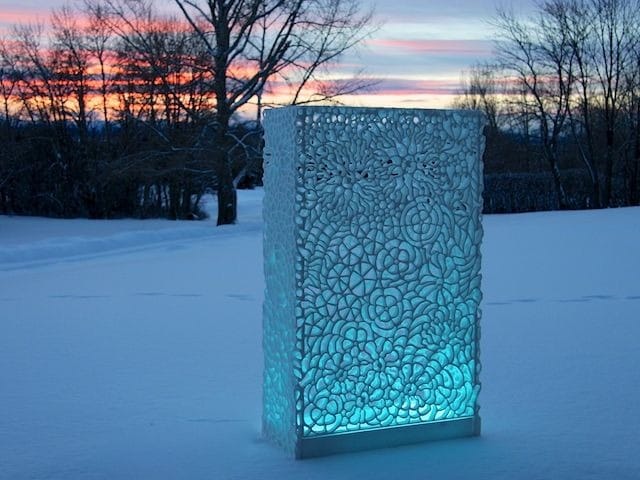
This devastating decline prompted Kolijn to learn about climate change and its effect on oceans. The knowledge she gained naturally made its way into her art, such as the installation pictured above, in which carved Styrofoam represents bleached coral.
Like other artists concerned with climate change, she strives to be a bridge between pure scientific facts and human discourse, creating an artistic and emotional entrance into the statistics and charts of scientific proof and knowledge, seeing this is a way to facilitate public discourse about changing the current trajectory of our world.
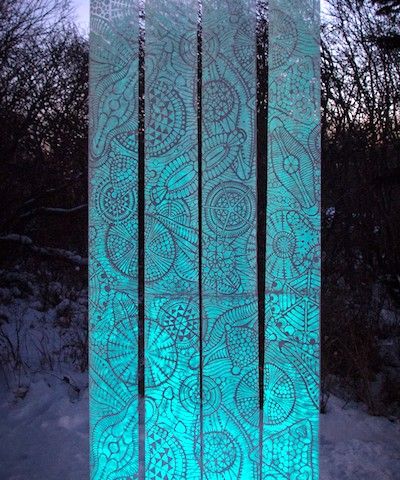
Kolijn's work both celebrates and warns of the importance that the ocean holds in producing the oxygen we humans breathe. The Ocean Veil II above is often paired in exhibition with her "Lung Series," in the same way that she pairs the Tree of Life and the Bronchial tree of human lungs below. With these pairings, she artistically draws out the connection between our ability to breathe, and therefore live, with the trees (and plankton) that produce the oxygen we breathe.
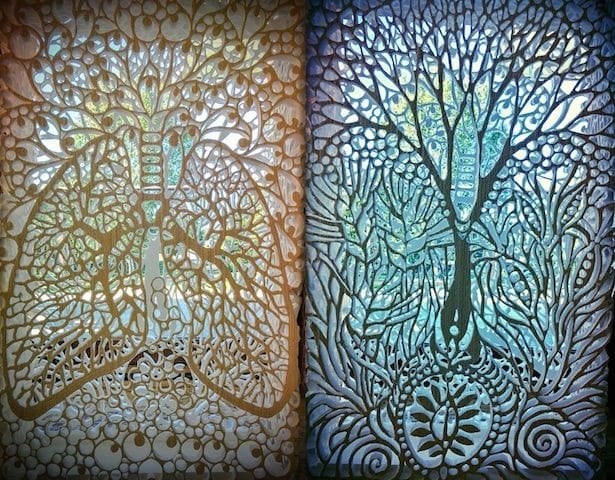
Carved from Styrofoam, the Breath of Life work was inspired by a series called "Sublime Waste," pictured below. Carving lacy, delicate patterns of the ocean and ocean life into throwaway Styrofoam containers, the artist hoped to raise awareness of the problem of microplastics by "creating a beautiful object” and catching attention through that beauty.
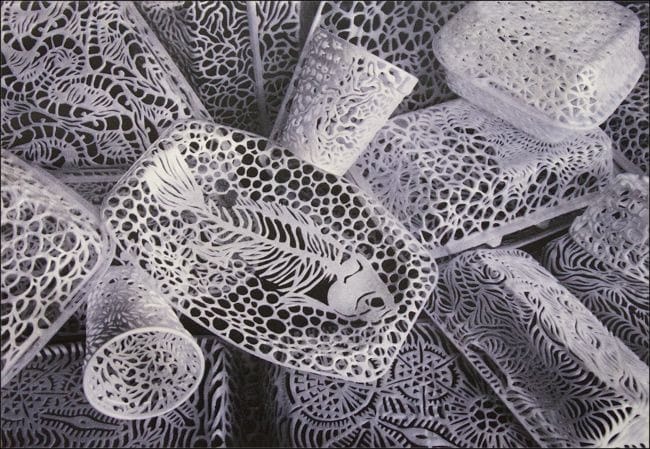
The irony of these throwaway containers is bitter. Manufactured and intended for convenient, one-time usage that lasts only as long as it takes to drink a cup of coffee or finish a take-out meal, the materials themselves become much more permanent parts of the biosphere once they are introduced into it. As Kolijn says, “Styrofoam, it doesn’t break down, it remains in the environment for at least 500 years, and it keeps accumulating.” It is disturbing to think of what an accumulation of 500 years of Styrofoam would look like and mean.
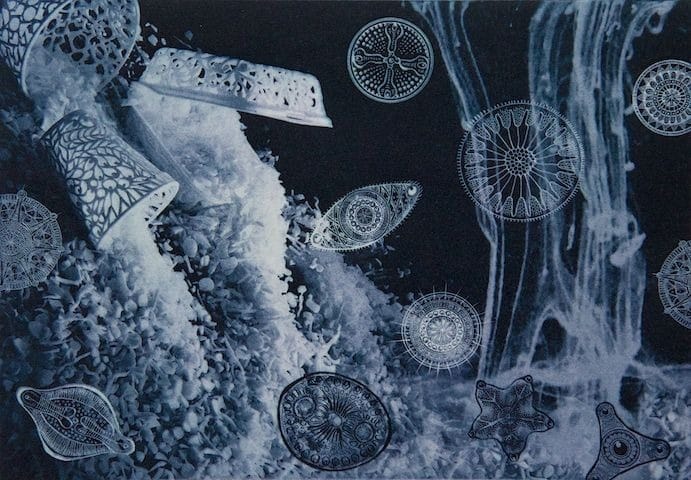
Kolijn's sculptures capture the imagination of the viewer and, at the same time visually bring home to them the harm done by Styrofoam and the use of plastics, which often breaks into smaller pieces, can be mistaken for tiny plankton, which may then be ingested by plankton-eaters and become part of the food chain. This sort of unintended longevity and consequence comes from manufacturing things that survive past their usefulness and beyond our interest or willingness to take responsibility for what we have purchased and used rather than seeing it as only ours while it is holding the food we are eating from it.
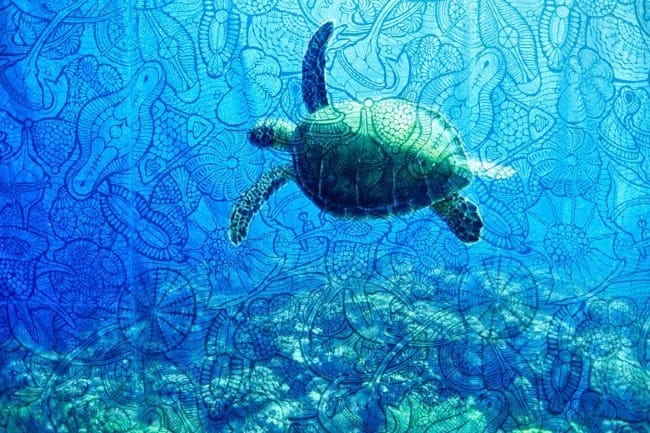
Drawing attention to the importance of the ocean for all life, including human life, is a recurring theme in Kolijn's work. As she says, people understand the importance of forests better than they understand the importance of the ocean in producing oxygen. The phytoplankton, or algae, of the oceans are even more significant sources of oxygen than the earth's forests. These "Lungs of the Earth" contribute at least 50% and perhaps as much as 85% of the oxygen in the Earth's atmosphere.
To communicate this artistically, Kolijn created an exhibition called, The Ocean Inside, which overlays prints of phytoplankton and other marine life on top of photographs and videos of the ocean. She wants to bring home to people this truth: "every second breath you take is made possible by microorganisms in the sea.”
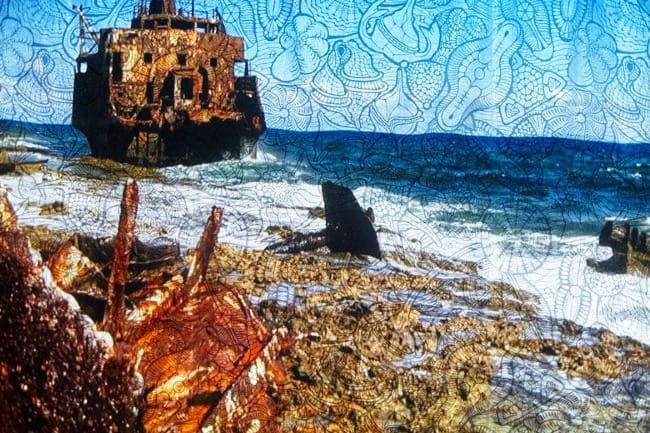
You can see an introduction to The Ocean Inside here.
An artist living in Calgary may be a long distance physically from the coral reefs and ocean she returns to in her work, but, as Kolijn points out, activity in Calgary is directly connected to the health of those far-away places. Oil extraction is commonplace in Alberta, and this is one of the major contributors to climate change, changing the carbon content in the atmosphere.
To see those lines of cause and affect enables us to recognize our own responsibility toward the health of the biosphere we live within and the ways in which our own actions, wherever we live, have affect places far away from us physically. Just because we don't live by the ocean, doesn't mean the Styrofoam container we use today won't end up at the bottom of that distant ocean. As Kolijn shows through her art, the Earth is a biosphere and thus, everything truly is connected; no action happens in isolation.
Is there something you might do to reduce or end your use of "disposable" containers? Are there practical ways you demonstrate how much you value the systems in this biosphere that provide you with the air you breathe?
To find some suggestions for reducing your use of single use plastics, follow this link.
Feel free to email me at info@circlewood.online or leave a comment below.
Louise
